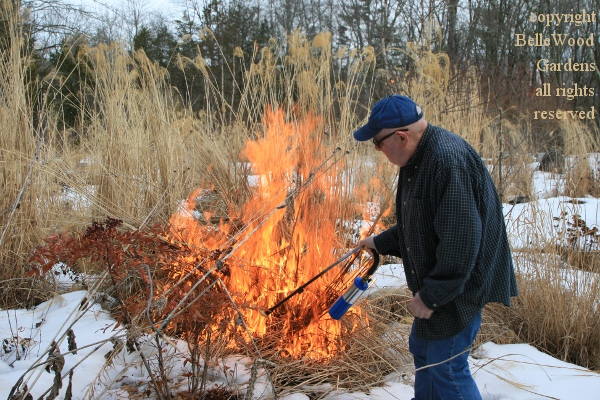
.
If you have any comments, observations, or questions about what you read here, remember you can always Contact Me
All content included on this site such as text, graphics and images is protected by U.S and international copyright law.
The compilation of all content on this site is the exclusive property of the site copyright holder.
We've spoken about this every now and again, my coming over when James begins the tremendous task of prepping for Spring in his garden. Having visited in summer and fall, of course I am interested to see what happens as winter bows out, at last. It's been an on again / off again situation as it snows, it's cold, there's some sun, the sky is overcast, the wind picks up. The grasses need to be dry, or at least dry-ish.
Here's the thing. James loves stately plants, sizeable herbaceous native plants and lots of ornamental grasses, big ones. Wonderful in late summer and autumn. But if you have ever grown ornamental grasses then you know that it is necessary to get the old dead biomass out of the way before the new growth begins to push up in Spring. So what does James do?

He burns back the grasses.
This is not something radical. The great grasslands of the Midwest are a fire ecology. In fact, the wonderful prairie restoration at Grey Summit, Missouri is burned periodically to control invading woody plants and non-native cool season perennials and grasses. I was at the New York Botanical Garden when they burned back the meadow in the old native plant garden. The Institute of Ecosystem Studies in Millbrook, New York did a multi-year study, burning a portion of their meadow versus mowing the other section. The burned over section did better.
So yes, I wanted to watch when James put his garden to the torch.
And today I got an e-mail: "I went out to do a test, not realizing my hose was frozen. Instead of burning one grass as a test, I burned most of the bank! I want to do some more before the rain comes. Are you available to come over?"
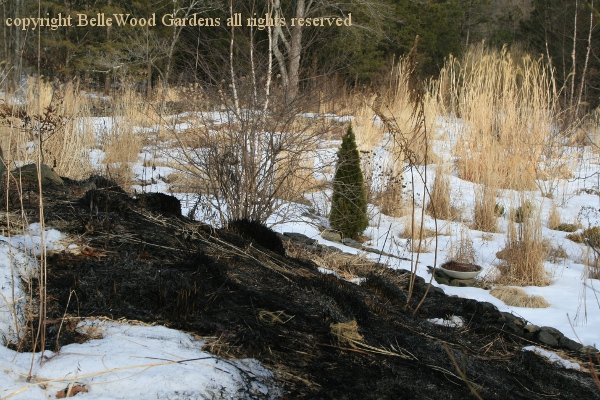
Indeed, this was beginning to seem even more exciting than I had anticipated.
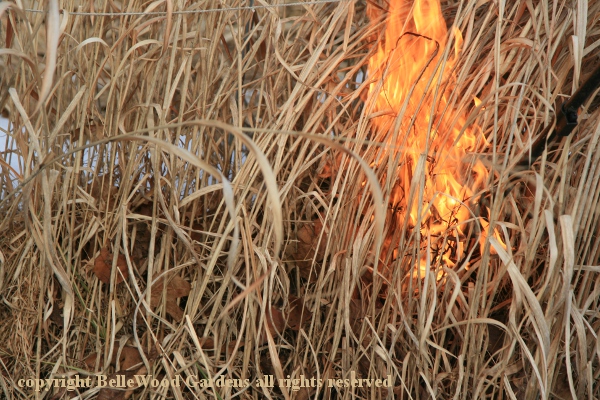
.
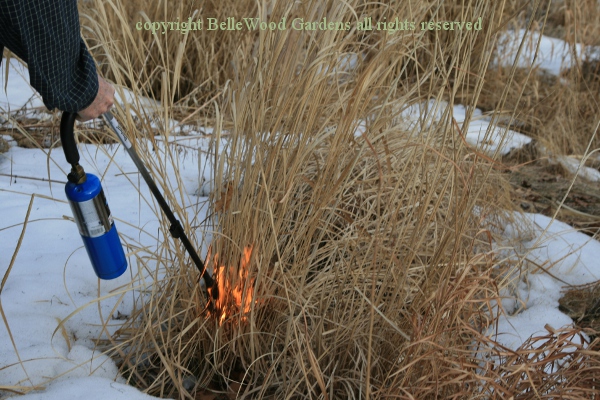
Conditions are ideal. It is not windy. The day is overcast. There's still a fair amount of snow on the ground so no worry about the leaf litter mulch igniting. James has a little propane cylinder with a long tube. It may be intended for burning weeds out of a gravel driveway or flagstone terrace, neither of us is quite sure. The process is very quick - after all, what's burning is tinder, not fuel.
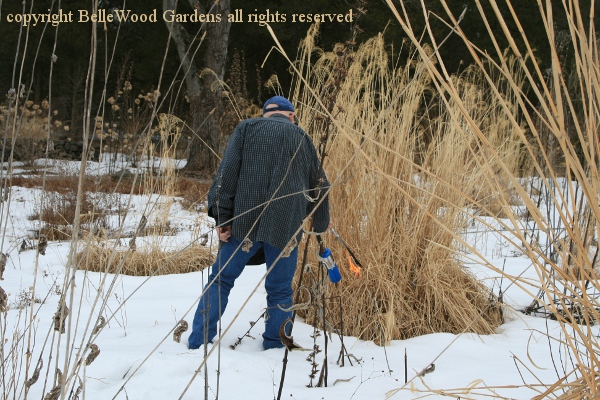
It goes like this. Ignite the base of the clump of grass.
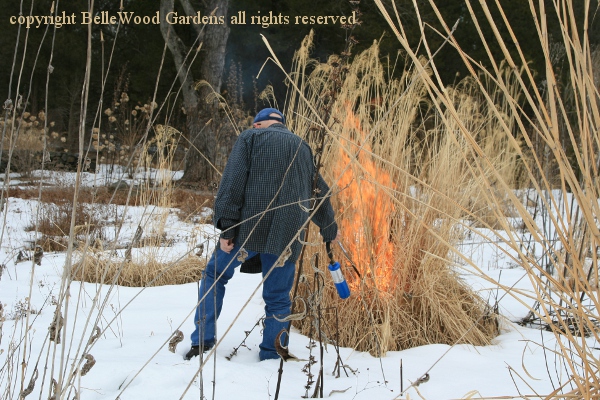
One second later the flames have caught.
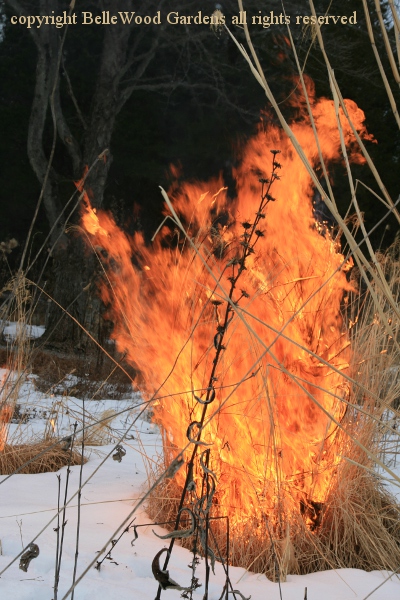
Within that same second the grass is engulfed in flame.
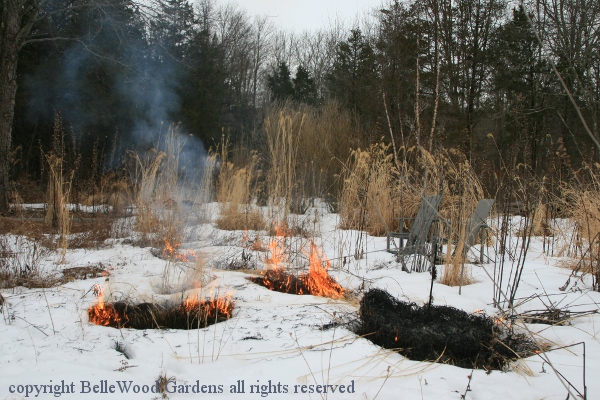
And just 2 seconds after igniting the fire the grass is all consumed, burned out.
Discussing management of a prairie garden, Neil Diboll of Prairie Nursery has several maintenance methods for prairies. First on his list - fire. Fires encourage the soil to warm up sooner in spring by exposing it to the warming rays of the sun. You could mow, but need to remove all the cut material. And that's even more work than cutting back the grasses to begin with.
The Ladybird Johnson Wildflower Center suggests that "By the third or fourth year, your meadow area may benefit from a controlled burn if enough fuel has accumulated. Fire is a natural process in many ecosystems, and can reduce woody plants and other invasive species. Burning also stimulates the growth of many native grasses and prairie perennials, and breaks the dormancy of some seeds."
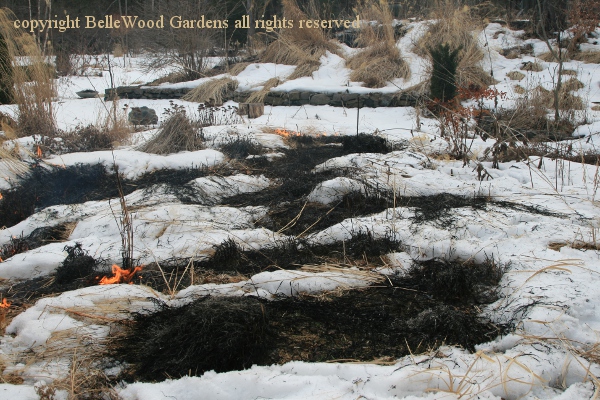
It looks black and ugly. But tomorrow's rain will begin to wash the nutrients back into the soil. Within another month or so new green of the grasses will appear, unfettered by the mass of last year's dead stems. And the cycle of growth and the seasons is renewed, at the Garden at Federal Twist.
Back to Top
Back to March 2015